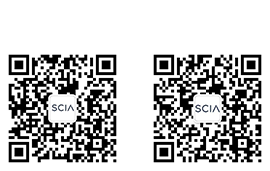
Mark Feldman:深圳与国际仲裁的未来
发布时间:2021-01-26 15:11:27
编者按:
深圳国际仲裁院(又名华南国际经济贸易仲裁委员会、深圳仲裁委员会,曾用名中国贸促会对外经济贸易仲裁委员会深圳办事处、中国国际经济贸易仲裁委员会深圳分会、中国国际经济贸易仲裁委员会华南分会,中文简称“深国仲”,英文简称“SCIA”)由广东省经济特区管理委员会和深圳市委、市政府创立于1983年,是中国改革开放和经济特区建设的产物,是中国改革开放以来各省市设立的第一家仲裁机构,也是粤港澳地区第一家仲裁机构。
近40年来,深国仲锐意改革,持续创新,积极推动中国仲裁的国际化、现代化和专业化:1984年,在中国内地率先聘请境外仲裁员;1989年,开创中国内地仲裁裁决依照联合国《承认及执行外国仲裁裁决公约》获得境外法院强制执行的先例;2012年,在全球仲裁机构中率先探索法定机构管理机制,成为中国内地首个推行国际化法人治理机制的仲裁机构;2017年,创建中国国际仲裁第一个海外庭审中心,并开创常设仲裁机构合并的先例;2019年,率先探索国际仲裁“选择性复裁”制度……目前,深国仲仲裁员覆盖77个国家和地区,仲裁和调解当事人遍及全球119个国家和地区。特区国际仲裁已经成为国际化营商环境的重要组成部分。
为庆祝深圳经济特区建立40周年,深国仲和深圳商报以“深圳特区40年·我与特区国际仲裁的故事”为主题,广泛征集特区国际仲裁机构的初创者、特区仲裁治理机制改革的参与者、仲裁员、调解员、谈判专家、律师代理人和中外企业当事人的故事,共同回顾特区国际仲裁伴随着中国改革开放而持续创新发展的历程。今天分享的是北京大学国际法学院教授Mark Feldman先生的文章(附中文译文)。本文已收录在北京大学出版社2020年8月出版的《泉眼无声:国际仲裁的特区故事》之中。

Mark Feldman is a Professor of Law at the School of Transnational Law of Peking University and an Arbitrator of SCIA.
Shenzhen and the Future of International Arbitration
Prof. Mark Feldman
I met the President of the Shenzhen Court of International Arbitration (SCIA), Liu Xiaochun, at the School of Transnational Law of Peking University (STL) holiday party in 2011. The Founding Dean of STL, Jeffrey Lehman, introduced us. I had arrived in Shenzhen earlier that year, as I transitioned to STL following five years of service at the U.S. Department of State, where I represented the United States in investment treaty arbitration. At the time, I knew that Shenzhen was looking to establish a global reputation in a number of areas, including international dispute resolution. But I did not know, at the time, how closely I would work with the SCIA over the next decade, or indeed how much international arbitration in Shenzhen would transform during that time.
A few months after the STL holiday party, I visited, with several STL colleagues, the offices of the SCIA’s predecessor, the China International Economic and Trade Arbitration Commission (CIETAC) South China Commission, where Liu Xiaochun then served as Deputy Secretary-General. Dr. Liu led a tour of the offices, including an impressive gallery of photographs illustrating the history of the institution, which was founded in 1983, only a few years after the establishment of the Shenzhen SEZ. As Dr. Liu later observed, this arbitration institution in Shenzhen was the first mainland China arbitral institution to include foreign nationals on its panel of arbitrators and to have an award enforced pursuant to the New York Convention(across the border in Hong Kong).
Later in 2012, I attended the launch of the SCIA, together with a number of STL colleagues. Throughout the 2010s, dozens of STL students would intern at the SCIA, and a number of STL graduates ultimately would accept positions there.
One of those STL graduates, Chi Wenhui, currently serves as legal counsel in the SCIA’s International Cooperation and Development Department and already has demonstrated leadership in that position, including a role as keynote speaker at a 2019 SCIA event on China-Africa Cooperation on Arbitration. Working alongside Chi Wenhui as legal counsel in the SCIA’s International Cooperation and Development Department is Deng Kaixin, who has played a central role in the planning and design of the SCIA events in which I have had an opportunity to participate. My communications with the SCIA very often are communications with Deng Kaixin.
Looking back on almost a decade of collaboration with the SCIA, two developments, for me, stand out. The first is the SCIA’s consistently expanding interest in investment treaty arbitration. The second is the SCIA’s commitment to building relationships, globally, with leading institutions and individuals in the international arbitration community.
Regarding investment treaty arbitration, I have had a number of opportunities to play a supporting role in the SCIA’s development of expertise in the area. In 2016, at the SCIA’s offices, I was able to share some thoughts on my five-year experience representing a government in international investment disputes. Also in 2016, I collaborated with the SCIA on the development of a roster of arbitrators specializing in international investment disputes.
The SCIA’s strong interest in investment arbitration was further demonstrated that year by the issuance of a set of updated arbitration rules, which confirmed that the SCIA was prepared to administer disputes between foreign investors and States.
In 2017, the SCIA reconfirmed its strong interest in investment arbitration by hosting a major conference on Chinese companies and investment arbitration. I chaired the first session on “Latest Developments in Investment Arbitration,” which assembled an extraordinary set of individuals working in various capacities in the investment arbitration community, including senior government officials, leaders of arbitral institutions, practitioners, and scholars.
In particular, the session included the following participants: Meg Kinnear, Ma Yuchi, Yao Jun, Matthew Hodgson, Sun Huawei, Peter Malanczuk, Chiann Bao and Li Yuwen. In a later session at that event, I was able to provide commentary alongside Fei Ning and Julien Chaisse. The program attracted hundreds of registrants.
The participation, at the SCIA’s 2017 event, of the Secretary-General of the International Centre for Settlement of Investment Disputes (ICSID), Meg Kinnear, was followed, in 2018, by the conclusion of a cooperation agreement between ICSID and the SCIA. The agreement provides for reciprocal use of hearing facilities and services in China and the United States; ICSID’s 2018 annual report highlighted the conclusion of the agreement.
The cooperation agreement with ICSID illustrates not only the SCIA’s interest in investment arbitration, but also the SCIA’s larger efforts to build relationships with leading institutions and individuals in the international arbitration community. Building such relationships not only enhances the SCIA’s global reputation but also supports the core Belt and Road Initiative (BRI) policy goal of connectivity. As stated in the Joint Communique of the Leaders Roundtable of the Belt and Road Forum for International Cooperation: “We stand for strengthening physical, institutional, and people-to-people connectivity among all countries.”[1]
With respect to institutional and people-to-people connectivity, the SCIA unquestionably has advanced such policy goals over the past decade.
As one example of the SCIA developing connectivity between institutions, in 2018 I participated in a 3-day training organized by the SCIA and the International Chamber of Commerce (ICC), held in Shenzhen, on international commercial arbitration. The event attracted more than 20 foreign legal experts, more than 30 prominent lawyers working on foreign-related business matters in Guangdong province, and more than 500,000 viewers online. Prior to that event, in 2017, the SCIA had signed a memorandum of understanding with the ICC, which strengthened cooperation between the two institutions. The SCIA also has signed a memorandum of understanding with the Singapore International Arbitration Centre, again to advance international cooperation in the area of dispute resolution services.
The SCIA also strengthened its relationship with the United Nations Commission on International Trade Law (UNCITRAL) when jointly hosting in Shenzhen a commemorative event to mark the 60th anniversary of the New York Convention. UNCITRAL’s decision to support the commemorative event in Shenzhen was significant. Participants again included senior government officials, leaders of arbitral institutions, practitioners and scholars. The Secretary of UNCITRAL, Anna Joubin-Bret, and Dr. Liu each delivered a keynote address.
The SCIA’s efforts to advance connectivity extend to the United States. In 2018, I participated in an SCIA-organized event held in New York, which assembled prominent US-based members of the international arbitration community, including practitioners, scholars, and leaders of arbitral institutions such as the American Arbitration Association and JAMS. Notably, the SCIA’s cooperation with JAMS has expanded to include the development of a Sino-American panel of international arbitrators.
The SCIA’s call for contributions, “Four Decades of Shenzhen SEZ - My Story of International Arbitration at SCIA,” is retrospective in nature, but on the 40th anniversary of the Shenzhen SEZ I also would like to offer a few forward-looking thoughts. With respect to international dispute resolution, the global center of gravity continues to shift toward Asia. BRI infrastructure projects are centered in Asia, which means that BRI infrastructure disputes will be centered in Asia. Leadership in dispute resolution rulemaking - including third party funding, enforceability of judgments, and online dispute resolution - increasingly occurs in Asia. There also will be expanding opportunities for interactions in Asia among a range of providers of dispute resolution services, including arbitral institutions, mediation institutions, international commercial courts, and the multilateral Asian Infrastructure Investment Bank (which devoted its 2019 Yearbook of International Law to international dispute resolution).
The opportunities for interactions between providers of litigation, arbitration and mediation services are particularly good in Shenzhen, given that one of the two tribunals of the China International Commercial Court (CICC) - which has emphasized the importance of integrating dispute resolution services as part of its “one-stop” model - is located in Shenzhen. Indeed, the connections between the CICC and Shenzhen extend well beyond the location of the CICC tribunal. Shen Sibao, who serves as Chairman of the SCIA Council, and Peter Malanczuk, who serves as a Member of the SCIA Council, also serve on the CICC’s International Commercial Expert Committee. Members of the International Commercial Expert Committee are authorized to support CICC decision-making in a number of respects, including by providing mediation services as well as guidance on questions of international or foreign law. My STL colleague Susan Finder also serves on the International Commercial Expert Committee, providing an additional significant connection between the CICC and Shenzhen. I also would note that the relationship between Shenzhen and the SCIA has been further strengthened by the recent merger between the SCIA and the other leading Shenzhen-based arbitral institution, the Shenzhen Arbitration Commission.
The SCIA’s Shenzhen location not only increases opportunities for interactions with a range of providers of dispute resolution services, but also reinforces the SCIA’s entrepreneurial spirit. Shenzhen is a young, technology-oriented city that embraces rapid innovation. That orientation has driven the SCIA’s ambitious rulemaking and relationship building and will ensure that the SCIA continues to thrive, notwithstanding increasingly significant challenges to the global economy generally and international dispute resolution specifically. The accelerating pace of change is intimidating, but ultimately favors Shenzhen and the SCIA.
[1] Joint Communique of the Leaders Roundtable of the Belt and Road Forum for International Cooperation (15 May 2017), para. 10.
Mark Feldman,北京大学国际法学院教授,深圳国际仲裁院仲裁员。
深圳与国际仲裁的未来
Prof. Mark Feldman
2011年,我在北京大学国际法学院(STL)的迎新晚会上,经北京大学国际法学院创始院长Jeffrey Lehman介绍,结识了深圳国际仲裁院(SCIA)的院长刘晓春博士。我于2011年年初抵达深圳,结束了在美国国务院长达5年的代表美国政府从事投资条约仲裁的工作,转而执教于北京大学国际法学院。在那时我就意识到深圳渴望着在各个领域的国际舞台上铸造全球性声誉,这当然也包括建设国际争议解决高地这一宏伟目标。但当时我没有预见到之后近十年我与深国仲建立如此紧密的工作联系,更遑论深圳的国际仲裁即将迎来的诸多巨变。
与晓春博士相识数月后的一天,我与几位北京大学国际法学院的同事一起参访深国仲(当时名为中国国际经济贸易仲裁委员会华南分会)的老办公楼。时任副秘书长的晓春博士带领我们参观了办公场地,直至今日我仍对那一组机构历史照片印象深刻。深国仲创设于1983年,距深圳经济特区成立不过数年。正如晓春博士所说,深国仲不仅开创了中国内地仲裁机构聘请境外仲裁员的先河,也开创了中国内地仲裁裁决按照《承认及执行外国仲裁裁决公约》(即《纽约公约》)在境外获得承认和执行的先例。
2012年年中,我与北京大学国际法学院的许多同事共同出席了深国仲新名称的揭牌仪式。近十年来,大批北京大学国际法学院学子在深国仲实习,其中不乏佼佼者成为深国仲的一员。
其中一位北京大学国际法学院毕业生迟文卉目前在深国仲国际合作与发展处担任法律顾问,并已在工作中崭露头角,曾在2019年深国仲中非仲裁交流的活动中担任发言人。我熟知的另一位是与迟文卉一样在深国仲国际合作与发展处担任法律顾问的邓凯馨。我有幸参加了深国仲举办的多个活动,均是由邓凯馨主导策划和组织的。我与邓凯馨的沟通交流较为频繁和深入,这些交流也是我认识深国仲的一个窗口。
回首与深国仲近十年的合作,我认为深国仲有两大发展令人瞩目。其一是深国仲开始在国际投资仲裁领域深入布局,其二是深国仲致力于在全球范围内与国际组织、领先仲裁机构及业界贤达保持广泛稳定的交流合作。
我曾多次协助深国仲在国际投资仲裁领域进行探索。2016年,我曾在深国仲办公室与深国仲的同事们分享我代表政府处理国际投资争端的经验。同年,我与深国仲共同草拟了国际投资仲裁员名册。2016年《深圳国际仲裁院仲裁规则》,更是印证了深国仲期望在投资仲裁领域深耕的决心,也表明深国仲为应对外国投资者与国家之间的争议所做的充足准备。
2017年,深国仲举办了主题为“一带一路:中国企业与投资仲裁”的中国华南企业法律论坛大型研讨会,再次彰显了其期望开拓国际投资仲裁的信心。我主持了研讨会的第一节“投资仲裁的最新发展”,这一节汇聚了投资仲裁领域的各界著名人士,包括政府高级官员、仲裁机构负责人、从业人员和学者。会议的特别来宾包括:Meg Kinnear、马宇驰、姚军、Matthew Hodgson、孙华伟、Peter Malanczuk、鲍其安和李玉文等。在研讨会的第二节,我与费宁、Julien Chaisse一起对发言进行点评。该研讨会吸引了数百人参加。
在参与深国仲举办的2017年年度活动后,世界银行国际投资争端解决中心(ICSID)秘书长Meg Kinnear女士与晓春博士分别代表世界银行国际投资争端解决中心和深国仲,于2018年签署了合作协议。根据协议安排,深国仲和世界银行国际投资争端解决中心将相互为对方提供庭审设施及配套服务。世界银行国际投资争端解决中心在2018年的年度报告中也重点强调了该协议的签署情况。
与世界银行国际投资争端解决中心的合作不仅体现了深国仲对投资仲裁的持续关注,也展现了深国仲在加强与国际仲裁界领先机构和业界贤达建立联系方面的巨大努力。建立这样良好的关系纽带既是提升深国仲国际影响力的重要举措,也是实践“一带一路”倡议互联互通目标的应有之义。正如《“一带一路”国际合作高峰论坛圆桌峰会联合公报》中所提及的:“我们主张加强各国基础设施联通、规制衔接和人员往来。”[1]毫无疑问,过去10年,深国仲在推进规制衔接和人才交流方面成绩显著。
深国仲在推动促进与机构间的沟通交流方面,还有一个可圈可点的例子:2018年我参与了深国仲与国际商会(ICC)仲裁院在深圳举办的关于国际商事仲裁的培训。二十多名涉外法律专家及三十多名广东涉外律师领军人才现场参与了培训,并有超过50万观众在线观看。在此之前,深国仲于2017年与国际商会仲裁院签署了谅解备忘录,加强了两个机构之间的合作。另外,深国仲与新加坡国际仲裁中心也签署了谅解备忘录,以进一步推动争议解决服务领域的国际合作。
联合国国际贸易法委员会(UNCITRAL)与深国仲联合举办的第八届中国华南企业法律论坛“《纽约公约》六十周年与‘一带一路’”研讨会,加深了深国仲与联合国国际贸易法委员会的深厚友谊。我认为联合国国际贸易法委员会决定在深圳举行纪念活动意义深远。本次论坛的与会者同样包括政府高级官员、仲裁机构负责人、从业人员和学者等。联合国国际贸易法委员会秘书长Anna Joubin-Bret和晓春博士分别发表了主题演讲。
深国仲推动机构互联互通的影响力扩大到了美国。2018年,我参加了由深国仲在纽约举办的活动,该活动聚集了美国境内的国际仲裁领域的知名人士,包括从业人员、学者和仲裁机构的领导人,如美国两家主要仲裁机构美国仲裁协会(AAA)和美国司法仲裁调解服务有限公司(JAMS)的负责人。值得一提的是,深国仲与美国司法仲裁调解服务有限公司的合作进一步延伸到共同创建中美联合仲裁员名册。
深国仲举办的“深圳经济特区40年•我与特区国际仲裁的故事”征稿活动主要是回顾过去,但是在深圳经济特区成立40周年之际,我也想聊一些对未来的想法。就国际争议解决而言,全球重心都在向亚洲转移。“一带一路”的基础设施项目集中在亚洲,这意味着与之相关的争议将集中在亚洲,亚洲也会愈发获取争议解决(包括第三方资助、判决的跨境执行和线上争议解决)规则制定的主导权。与此同时,包括仲裁机构、调解机构、国际商事法庭和亚洲基础设施投资银行(以下简称“亚投行”)在内的一系列争端解决服务提供者在亚洲的合作互动也将不断深入(亚投行制定并发布了2019年国际法年鉴,着重提到国际争议解决)。
最高人民法院国际商事法庭(CICC)的两个法庭之一选址于深圳,其宗旨是为境内外当事人提供“一站式”国际商事纠纷多元化解决平台。深圳为诉讼、仲裁和调解机构之间的良好互动提供了平台。事实上,最高人民法院国际商事法庭与深国仲之间的渊源不仅限于其所在位置——深国仲理事长沈四宝和深国仲理事Peter Malanczuk同时也是国际商事专家委员会的专家委员。国际商事专家委员会的专家委员有权为最高人民法院国际商事法庭的决策提供支撑,包括提供调解服务以及提供国际法或外国法方面的指导。我在北京大学国际法学院的同事Susan Finder也是国际商事专家委员会的专家委员,她也充当着最高人民法院国际商事法庭与深圳的联系纽带。
深圳不仅为深国仲增加了许多与争议解决机构的合作互动机会,也为深国仲注入了创新基因。深圳是一个年轻的、创新的、高科技的城市。即便全球经济和国际争议解决面临着日益严峻的挑战,深国仲的宏伟目标仍持续驱动着她不断地进行规则创新和国际合作,从而蓬勃发展。世事无常,但变化中蕴含的机遇终将让深圳和深国仲进一步走向辉煌。
译者:邓凯馨,深圳国际仲裁院国际合作与发展处(自贸区仲裁处)法律顾问
注释:
[1]《“一带一路”国际合作高峰论坛圆桌峰会联合公报》(2017年5月15日),第10段。




